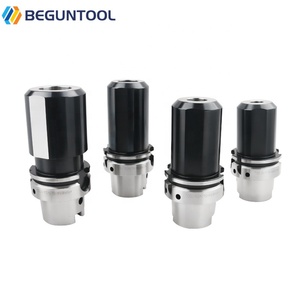(9435 products available)
































































































































































































































The tool holder for the drill machine is available in different types. Each has its own unique features and applications.
Tools Holder Size
Before purchasing a tool holder, it is essential first to assess the size of the tool and determine whether it will fit in the holder. This will impact the accuracy and efficiency of the drilling process.
Clamping Mechanism
This refers to the way the drill bit is held in place while drilling. In manual tool holders, the clamp is usually a nut and bolt combination, while automatic tool holders use a mechanism that can be engaged and disengaged with ease.
Material
Drilling machine tool holders are made from different materials like steel, nylon, or aluminum alloy. This will determine the strength and durability of the holder.
Weight
Weight is an important consideration because it affects the ease of use and portability of the holder. Lightweight holders make more sense in applications where portability is important, while heavy-duty holders are more suitable for industrial use.
Maximum RPM
This refers to the maximum rotation speed at which the tool holder can safely operate. The tool holder's maximum RPM largely determines its suitability for various drilling applications.
Regular Cleaning:
It is important to clean the tool holder regularly to remove any debris, dust, or residue that may have accumulated on it during use. This ensures that its function is not impeded, and the drilling accuracy is maintained.
Lubrication:
Maintaining the tool holder's smooth and optimal operating condition involves applying a small amount of lubricant to the moving parts, such as tracks and locking mechanisms.
Inspection:
Users should routinely inspect the tool holder for obvious signs of wear or damage. If there's any deformation, the user should replace the holder immediately to avoid any adverse effects on the workpiece.
The drilling tool holder allows for different scenarios.
Industry
Tool holders are used in the mining industry to support drills used for drilling rocks to extract mineral resources. The mining industry depends heavily on drilling tool holders.
Construction
Construction industries use drilling tool holders for various tasks such as creating holes in structural components, installing plumbing and electrical systems, anchoring objects, and more.
Machinery
Machinery repair and manufacturing industries use drilling tool holders to support machining drills in CNC machines, lathes, milling machines, and other machining equipment.
Aerospace
The aerospace industry utilizes drilling tool holders to make holes in light alloy components used to manufacture various aerospace equipment such as satellites, landing gear, fuselage, wings, etc.
Automotive
Automotive drill holders are used to ensure accurate drilling of holes for engine components, transmission assemblies, chassis parts, and other automotive equipment and accessories.
Woodworking
In woodworking, tool holders are used to drill holes in furniture, cabinets, doors, windows, wooden structures, and carpentry tools and equipment.
Plastic and Metal Industry
In the plastic and metal industries, tool holders are used in various production processes, including creating holes for assembling plastic and metal parts and products.
Wholesale buyers should understand that the drilling tool holder directly impacts the machining process's flexibility, productivity, and accuracy. Therefore, they should consider the shank size and configuration, as it needs to match the drill's drive socket for a proper fit. Also, buyers should consider the tool holder's material and build quality. A holder made of high-strength steel with good build quality offers increased durability and low runout for precise machining. Consider the active clamping mechanism, whether pneumatic, manual, or hydraulic. Holders with different active mechanisms are suitable for particular applications. For example, manual clamping is commonly used in smaller workshops due to its simplicity.
Wholesale buyers should also consider the tool types and sizes the holder can accommodate. If they have a wide variety of drill bits, they should go for versatile holders, such as the collet holders, that accept many tool shank sizes. Drill precision is crucial in machining. Therefore, buyers should get holders that provide high drilling accuracy. Typically, the more rigid the holder, the more precise the machining. Get holders that provide quick tool changes if working with a high production volume. Such holders minimize machining downtime and enhance productivity. Buyers should also get holders compatible with their drilling machines. Sometimes, a drilling bit may fit a tool holder perfectly but will not work with the drilling machine. Additionally, due to the frequent machining and wear, it is essential to inspect the tool holder regularly and replace it when necessary to maintain precision and effectiveness.
Q1. How do tooling holders work?
Tooling holders generally work by gripping the base of a cutting tool. They usually have a pre-defined external geometry for optimal fit and alignment with the machining tool.
Q2. What is the difference between a tool holder and a tool post?
A tool holder is used to hold the tools, while the tool post is used to hold the tool holder.
Q3. What are the types of tool holders?
Some common types of tooling holders include:
Q4. What are the five types of tool holders?
Some of the most common tool holder types include:
Q5. Which material is used for tool holders?
The most common materials used in tooling holders are casting iron and stainless steel. But some advanced material holders may use carbide or titanium.